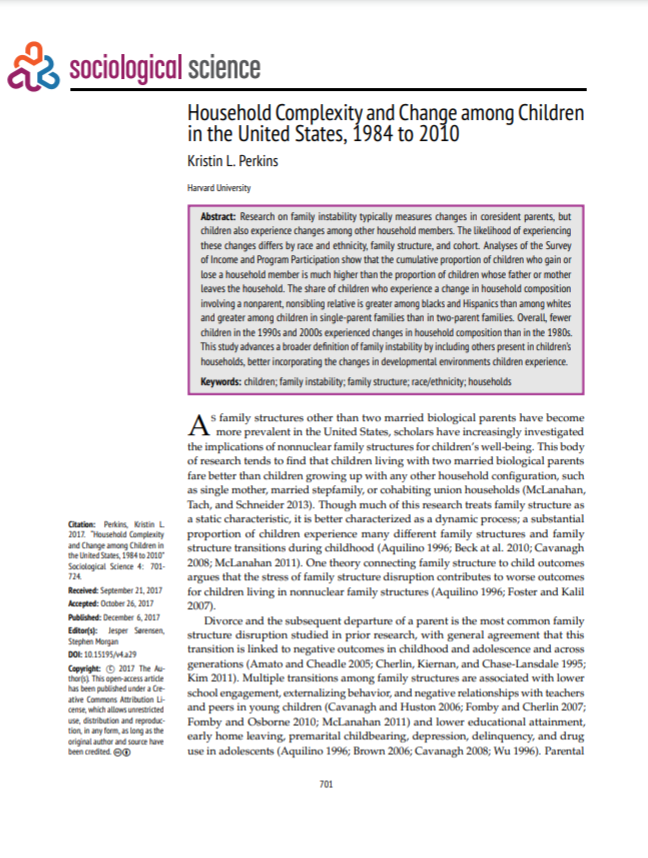Household Complexity and Change among Children in the United States, 1984 to 2010
Research on family instability typically measures changes in coresident parents, but children also experience changes among other household members. The likelihood of experiencing these changes differs by race and ethnicity, family structure, and cohort. Analyses of the Survey of Income and Program Participation show that the cumulative proportion of children who gain or lose a household member is much higher than the proportion of children whose father or mother leaves the household. The share of children who experience a change in household composition involving a nonparent, nonsibling relative is greater among blacks and Hispanics than among whites and greater among children in single-parent families than in two-parent families. Overall, fewer children in the 1990s and 2000s experienced changes in household composition than in the 1980s. This study advances a broader definition of family instability by including others present in children’s households, better incorporating the changes in developmental environments children experience.

